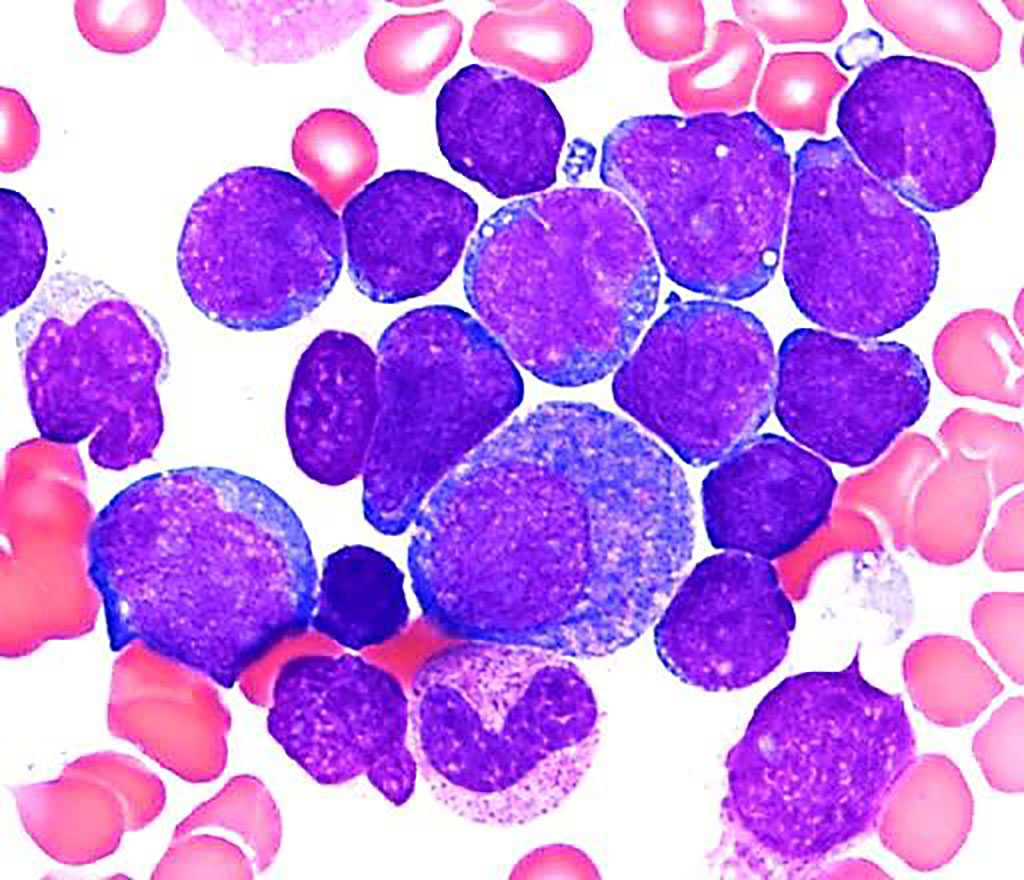Acute Lymphoblastic Leukemia Risk Linked to Genetically Mediated Increase in Lymphocytes
By LabMedica International staff writers
Posted on 15 Sep 2021
Acute lymphoblastic leukemia (ALL) is a cancer of the lymphoid line of blood cells characterized by the development of large numbers of immature lymphocytes. As an acute leukemia, ALL progresses rapidly and is typically fatal within weeks or months if left untreated.Posted on 15 Sep 2021
ALL is the most common cancer among children under 15 years old and is thought to develop under a two-hit model, under which a preleukemic clone develops in utero and a second somatic mutation then spurs the development of leukemia. While some genetic risk loci linked to ALL include variants in genes that have also been associated with hematopoiesis, lymphoid development, and blood-cell traits.

Image: Acute lymphoblastic leukemia: bone marrow aspirate smear reveals increased blasts which are small to medium in size with high nuclear-to-cytoplasmic ratios, round to irregular nuclei, smooth chromatin, and scant basophilic agranular cytoplasm. Some background maturing myeloid cells are also present in this case (Photo courtesy of Karen M. Chisholm, MD, PhD)
Genetic Epidemiologists at the University of Southern California (Los Angeles, CA, USA) and their colleagues investigated the etiological relevance of dysregulated blood-cell homeostasis in a genome-wide association study (GWAS) of childhood ALL (2,666 affected individuals, 60,272 control individuals) and a multi-trait GWAS of nine blood-cell indices in the UK Biobank. They examined blood cell traits such as lymphocyte, platelet, and neutrophil counts, as well as neutrophil-to-lymphocyte ratios and platelet-to-lymphocyte ratios.
The investigators reported that about 3,000 genetic variants were associated with one or more of these hematological traits and explained between 4% and nearly 24% of the variation in those traits. Additionally, 115 loci were linked to blood-cell ratios. They uncovered positive correlations between increased lymphocyte counts, lymphocyte-to-monocyte ratio, and neutrophil levels with ALL risk, and an inverse correlation between a higher platelet-to-lymphocyte ratio and ALL risk.
A clustering analysis identified two putative novel ALL risk variants from among those associated with blood cell traits, one on chromosome 2q22.1 and one within the FLT3 gene on 13q12.2. The scientists noted that variants within FLT3 have recently been linked to an increased risk of autoimmune thyroid disease and acute myeloid leukemia (AML). The allele linked to both ALL and AML risk lead to a truncated FLT3 protein, but an increase in FLT3 ligand levels. While this variant has a greater effect on the development of myeloid cells, they said it could also affect ALL risk through its activation of the RAS/MAPK pathway.
The authors concluded that their study showed that a genetically induced shift toward higher lymphocyte counts, overall and in relation to monocytes, neutrophils, and platelets, confers an increased susceptibility to childhood ALL. The study was published on August 31, 2021 in the American Journal of Human Genetics.
Related Links:
University of Southern California














